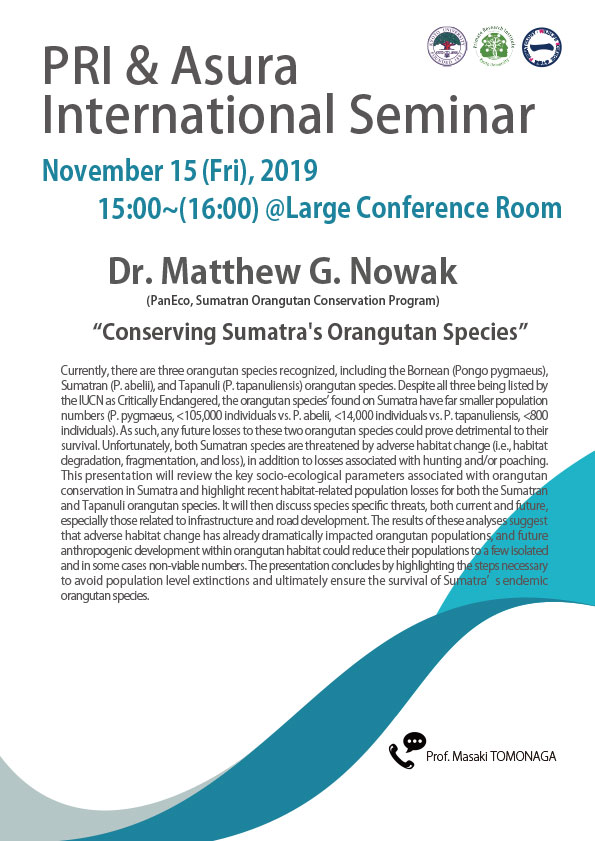
November 15, 2019
Large Conference Room, PRI
Dr Matthew G. Nowak
PanEco, Sumatran Orangutan Conservation ProgramCurrently, there are three orangutan species recognized, including the Bornean (Pongo pygmaeus), Sumatran (P. abelii), and Tapanuli (P. tapanuliensis) orangutan species. Despite all three being listed by the IUCN as Critically Endangered, the orangutan species’ found on Sumatra have far smaller population numbers (P. pygmaeus, <105,000 individuals vs. P. abelii, <14,000 individuals vs. P. tapanuliensis, <800 individuals). As such, any future losses to these two orangutan species could prove detrimental to their survival. Unfortunately, both Sumatran species are threatened by adverse habitat change (i.e., habitat degradation, fragmentation, and loss), in addition to losses associated with hunting and/or poaching. This presentation will review the key socio-ecological parameters associated with orangutan conservation in Sumatra and highlight recent habitat-related population losses for both the Sumatran and Tapanuli orangutan species. It will then discuss species specific threats, both current and future, especially those related to infrastructure and road development. The results of these analyses suggest that adverse habitat change has already dramatically impacted orangutan populations, and future anthropogenic development within orangutan habitat could reduce their populations to a few isolated and in some cases non-viable numbers. The presentation concludes by highlighting the steps necessary to avoid population level extinctions and ultimately ensure the survival of Sumatra’ s endemic orangutan species.